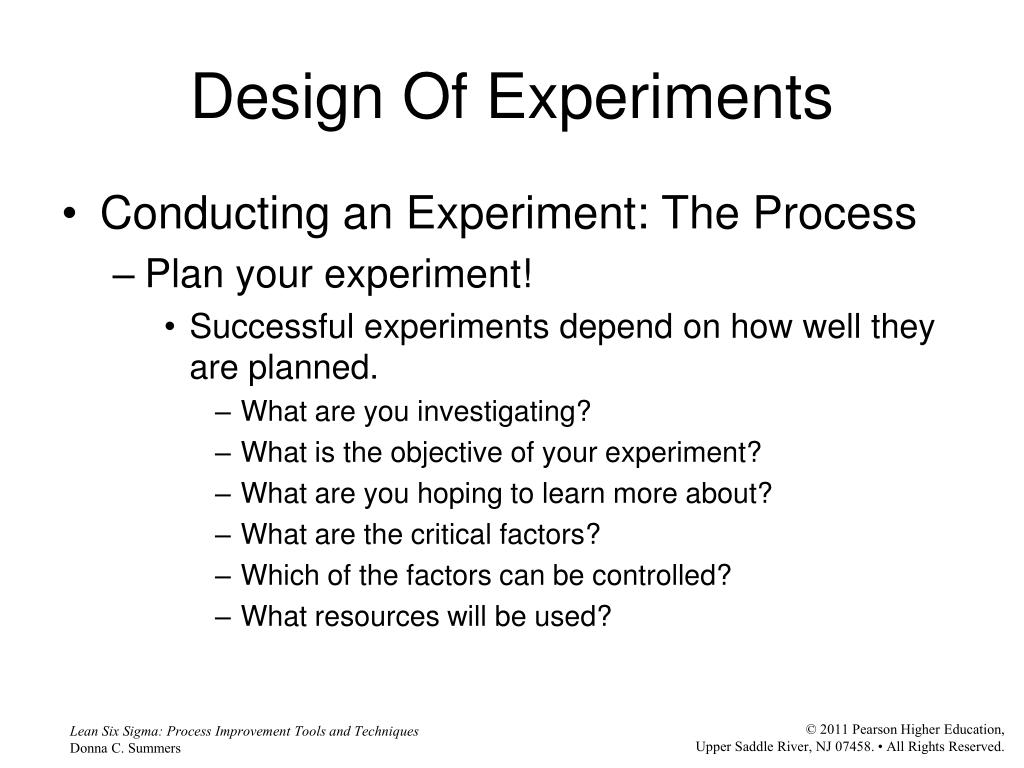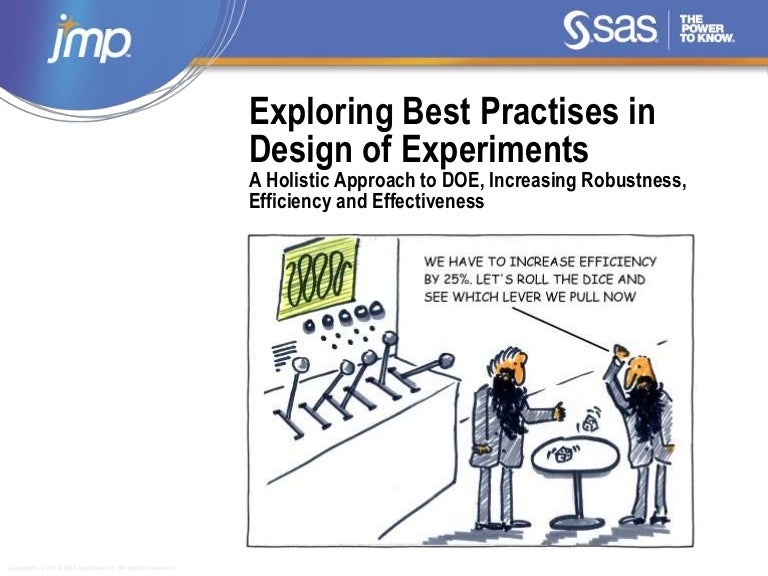Design of Experiment With Example Steps for Conducting DOE
Table Of Content

Although order effects occur for each participant, they balance each other out in the results because they occur equally in both groups. Saul Mcleod, PhD., is a qualified psychology teacher with over 18 years of experience in further and higher education. He has been published in peer-reviewed journals, including the Journal of Clinical Psychology. Your preference was saved and you will be notified once a page can be viewed in your language. The content of the motivation theories are well explained and its has been of great help to me .
Step 4: Assign your subjects to treatment groups
It's like being a detective who looks for clues not just in one room but throughout the entire house. Pre-Experimental Designs are the basic, no-frills versions of experiments. Researchers still mess around with an independent variable and measure a dependent variable, but they skip over the whole randomization thing and often don't even have a control group. Similarly, pre-experimental designs give researchers a starting point. They let you dip your toes in the water of scientific research without diving in head-first.
Longitudinal Design Cons
In this second experimental series, the pH is changed from 2.5 to 5.0 and you can see the measured yields. Using Design of Experiments (DOE) techniques, you can determine the individual and interactive effects of various factors that can influence the output results of your measurements. You can also use DOE to gain knowledge and estimate the best operating conditions of a system, process or product.
DOE in Pharmaceutical Industry
Below are some typical examples of experimental designs, with their type indicated. Experimental design involves testing an independent variable against a dependent variable. Those implementing a DOE strategy will find that computer software is an essential tool for developing and running factorial experiments. The Design-Expert program was used to create the response surface in Figure 7, for example. Other user-friendly DOE software includes BBN, CADE, Design-Ease, JMP, Statistica, and Statgraphics. Finally, for those who wish to learn more about DOE, a bibliography has been included here.
Theory-guided experimental design in battery materials research - Science
Theory-guided experimental design in battery materials research.
Posted: Wed, 11 May 2022 07:00:00 GMT [source]
History of Experimental Design
These are measured in categories and are converted into coded units for linear regression analysis. The experimental design will contain the points required to estimate the effects and interactions that you are investigating. DOE also assumes that you can easily measure the response for each run. Experimental design means creating a set of procedures to systematically test a hypothesis. A good experimental design requires a strong understanding of the system you are studying.
Discussion topics when setting up an experimental design
This way, you're really zeroing in on the effect of that energy drink, making the results more reliable. Last but not least, let's talk about Meta-Analysis, the librarian of experimental designs. One of the most famous correlational studies you might have heard of is the link between smoking and lung cancer. Back in the mid-20th century, researchers started noticing that people who smoked a lot also seemed to get lung cancer more often.

Covariate Adaptive Randomization Uses
Their ability to continually update and refine hypotheses based on new evidence makes them particularly useful in fields where data is constantly evolving and where quick, informed decisions are crucial. However, they can be quite complicated to set up and require a deep understanding of both statistics and the subject matter at hand. As you gather more clues (or data), you update your best guess on what's really happening. Next, let's dive into Bayesian Designs, the data detectives of the research universe. Named after Thomas Bayes, an 18th-century statistician and minister, this design doesn't just look at what's happening now; it also takes into account what's happened before.

They give you a rough idea of what's happening, which you can use to plan more detailed studies later. Before we dig into the different types of experimental designs, let's get comfy with some key terms. Understanding these terms will make it easier for us to explore the various types of experimental designs that researchers use to answer their big questions. Also, did you know that experimental designs aren't just for scientists in labs?
Adaptive Designs
"They are shifted laterally in distances proportionate to the letter spacing." "The processes that the Crick Institute used to create the microscopic type were all new to us as an agency," says creative director Tom Sharp. "So we had to be very adaptive to the results of the process, and allow them to define our approach to some extent. So if you're struggling to find your creative mojo, get inspired by these 11 amazing projects, which all harness experimental design to push boundaries like never before.
Impact of measurement noise, experimental design, and estimation methods on Modular Response Analysis based ... - Nature.com
Impact of measurement noise, experimental design, and estimation methods on Modular Response Analysis based ....
Posted: Thu, 01 Nov 2018 07:00:00 GMT [source]
We would have missed out acquiring the optimal temperature and time settings based on our previous OFAT experiments. So the next time you read about a new discovery in medicine, psychology, or any other field, you'll have a better understanding of the thought and planning that went into figuring things out. Experimental design is more than just a set of rules; it's a structured way to explore the unknown and answer questions that can change the world.
The results indicated that the in-person participants received the highest ratings from their supervisors. The online class participants came in second, followed by those on the waiting list. A large corporation wants to improve the leadership skills of its mid-level managers. The HR department has developed two programs, one online and the other in-person in small classes. The results indicated that participants that ate the nutrition bars ran faster, breathed more easily, and reported feeling less exhausted than participants that ate the non-nutritious bar.
Repeated Measures Design is all about studying the same people or subjects multiple times to see how they change or react under different conditions. One well-known example you might have heard about is the Kinsey Reports from the 1940s and 1950s, which described sexual behavior in men and women. Researchers interviewed thousands of people but didn't manipulate any variables like you would in a true experiment. They simply collected data to create a comprehensive picture of the subject matter. Quasi-Experimental Design gained traction in the mid-20th century. Researchers were grappling with real-world problems that didn't fit neatly into a laboratory setting.
Researchers lay out in advance what changes might be made and under what conditions, which helps keep everything scientific and above board. If our lineup of research designs were like players on a basketball court, Multivariate Design would be the player dribbling, passing, and shooting all at once. This design doesn't just look at one or two things; it looks at several variables simultaneously to see how they interact and affect each other. A high-profile example of Mixed-Methods Design is research on climate change. Scientists use numbers and data to show temperature changes (quantitative), but they also interview people to understand how these changes are affecting communities (qualitative).
Comments
Post a Comment